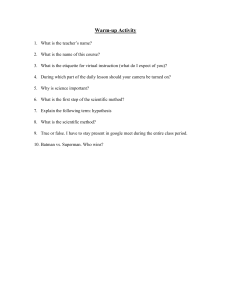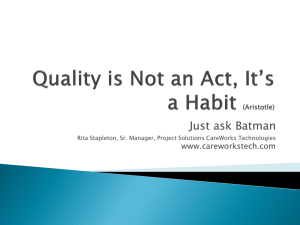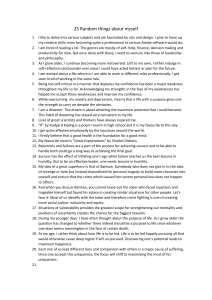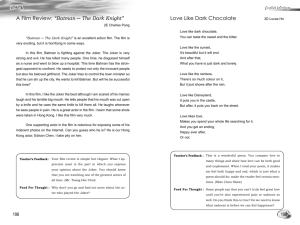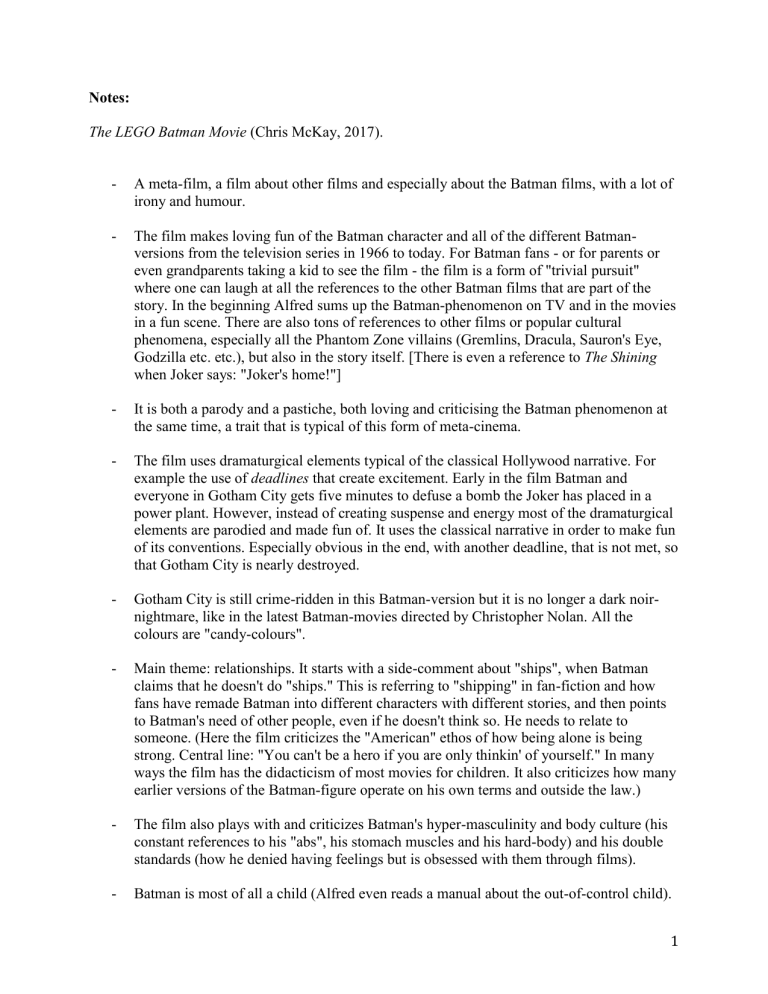
Notes: The LEGO Batman Movie (Chris McKay, 2017). - A meta-film, a film about other films and especially about the Batman films, with a lot of irony and humour. - The film makes loving fun of the Batman character and all of the different Batmanversions from the television series in 1966 to today. For Batman fans - or for parents or even grandparents taking a kid to see the film - the film is a form of "trivial pursuit" where one can laugh at all the references to the other Batman films that are part of the story. In the beginning Alfred sums up the Batman-phenomenon on TV and in the movies in a fun scene. There are also tons of references to other films or popular cultural phenomena, especially all the Phantom Zone villains (Gremlins, Dracula, Sauron's Eye, Godzilla etc. etc.), but also in the story itself. [There is even a reference to The Shining when Joker says: "Joker's home!"] - It is both a parody and a pastiche, both loving and criticising the Batman phenomenon at the same time, a trait that is typical of this form of meta-cinema. - The film uses dramaturgical elements typical of the classical Hollywood narrative. For example the use of deadlines that create excitement. Early in the film Batman and everyone in Gotham City gets five minutes to defuse a bomb the Joker has placed in a power plant. However, instead of creating suspense and energy most of the dramaturgical elements are parodied and made fun of. It uses the classical narrative in order to make fun of its conventions. Especially obvious in the end, with another deadline, that is not met, so that Gotham City is nearly destroyed. - Gotham City is still crime-ridden in this Batman-version but it is no longer a dark noirnightmare, like in the latest Batman-movies directed by Christopher Nolan. All the colours are "candy-colours". - Main theme: relationships. It starts with a side-comment about "ships", when Batman claims that he doesn't do "ships." This is referring to "shipping" in fan-fiction and how fans have remade Batman into different characters with different stories, and then points to Batman's need of other people, even if he doesn't think so. He needs to relate to someone. (Here the film criticizes the "American" ethos of how being alone is being strong. Central line: "You can't be a hero if you are only thinkin' of yourself." In many ways the film has the didacticism of most movies for children. It also criticizes how many earlier versions of the Batman-figure operate on his own terms and outside the law.) - The film also plays with and criticizes Batman's hyper-masculinity and body culture (his constant references to his "abs", his stomach muscles and his hard-body) and his double standards (how he denied having feelings but is obsessed with them through films). - Batman is most of all a child (Alfred even reads a manual about the out-of-control child). 1 - The family theme is important. Both the fact that Batman is an orphan who has a symbolic father in Alfred but refuses to be part of something family-like, and the fact that he at the end chooses his own family. He also chooses to be responsible to his own "son": Robin. - Parenting is also an important theme. Robin is more like an adopted son in this Batmanversion, and Batman needs to learn responsibility by treating him in a good way. - The film plays on simple contrasts and oppositions: vigilantism vs. cooperation, being alone vs. being together, the biological family vs. the chosen family, egotism vs. selflessness, bad vs. good etc. etc. Structuring a film narrative around simple binary oppositions is another aspect of the classical Hollywood narrative. - It starts with Batman claiming: "I don't need anyone", and ends by showing how he needs his chosen family in order to defeat the villains. - Rivalry is important, not only as a theme but also as a way of characterizing Batman as an irresponsible child. His rivals are first and foremost Superman and Police Commissioner Barbara, another superhero and a professional woman, and not the Joker or the other villains either in Gotham City or The Phantom Zone. The gender theme is linked to Batman's bad behaviour towards Barbara. - Sound (ambient sound, music and voices) makes inanimate matter, digital LEGO pieces, alive and shows how important music and sound is for a film. And, music creates atmosphere and emotions. Sometimes the music is so obvious - not underscoring, something we do not really notice but are influenced by - that sound and music becomes part of the meta-cinematic parody. - Many funny sound effects, often playing with LEGO elements. - For one part of the audience (children of all ages) the film is just pure fun, for another part of the audience it is nostalgic. Nostalgia for a time when superheroes were new is part of the loving pastiche. 2

